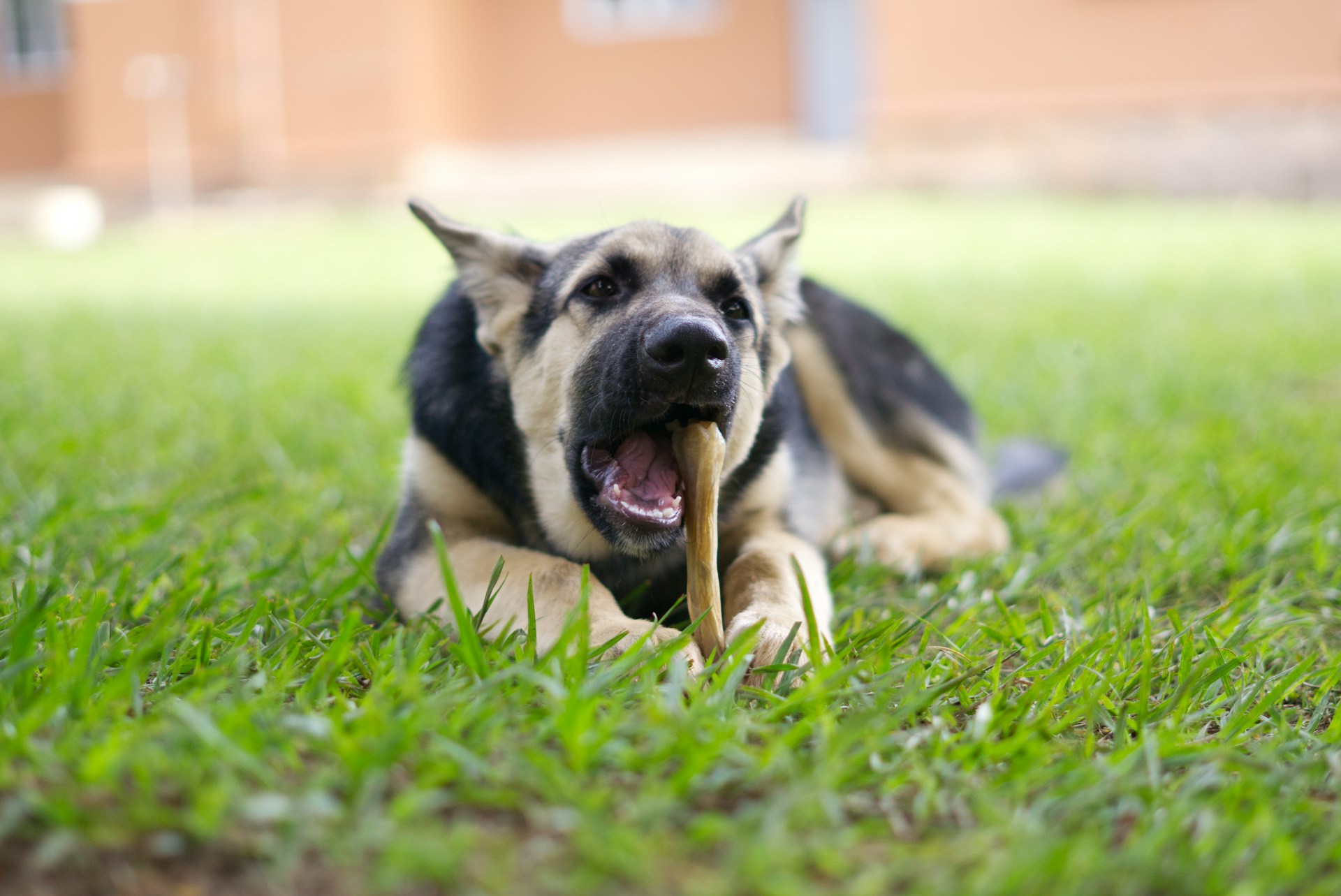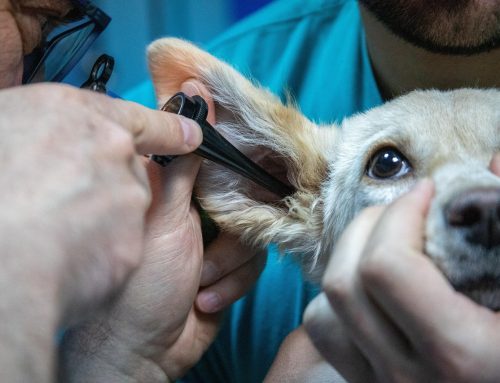
Bully sticks are a popular treat for dogs because they help keep pets busy and can be good for their teeth. But as a dog owner, you might wonder, Are bully sticks really safe for dogs? While bully sticks can offer some benefits, like satisfying your dog’s urge to chew and helping clean their teeth, there are also a few risks.
What is a Bully Stick for Dogs?
A bully stick is a popular dog treat made from the dried and processed muscle of a bull’s penis. While the name might sound strange, bully sticks are completely natural and packed with protein, which makes them a tasty and healthy option for many dogs. They come in a variety of shapes and sizes, including straight sticks, twists, and even braided versions. Bully sticks are chewy and long-lasting, which makes them great for dogs that love to chew. Chewing on them can help keep your dog’s teeth clean by reducing plaque and tartar buildup. These treats are also a good way for dogs to release pent-up energy and stay entertained, especially for dogs who tend to chew on furniture or shoes. While bully sticks can be a good source of exercise for your dog’s jaw, they should always be used with supervision. If a dog chews on a bully stick for too long, it could break off into small pieces, which could pose a choking risk. It’s also important to make sure your dog doesn’t consume too many, as they are high in calories. Always choose bully sticks that are made from high-quality ingredients to ensure they are safe for your pet. You want to avoid products labeled as bully sticks that contain rawhide. Bull pizzle as the only or main ingredient is most important.
Benefits of Bully Sticks For Dogs
Bully sticks offer some benefits for dogs, making them a common choice among pet owners. One positive is that they provide a great outlet for a dog’s natural chewing instinct. Chewing helps dogs relieve stress, burn off energy, and stay mentally stimulated, which can prevent destructive behavior like chewing furniture or shoes. Bully sticks are also a safe option to bring when boarding your dog as they are single ingredient treats. Bully sticks can also support dental health. As dogs chew on them, the tough texture helps scrape away plaque and tartar from their teeth, reducing the risk of gum disease and bad breath. Bully sticks are a good source of protein as well, which is essential for a dog’s overall health and muscle development. They are low in fat compared to some other chew treats, making them a relatively healthy option, especially when given in moderation. Since they are natural and made from just one ingredient, bully sticks tend to be free of artificial additives and preservatives, which can be found in some processed dog treats.

Are Bully Sticks Safe for All Dog Breeds?
Bully sticks are safe for most dog breeds, but there are a few things to consider depending on your dog’s size, age, and chewing habits. Larger dogs with strong jaws might be able to chew through a bully stick more quickly, which could pose a choking hazard if they break off large pieces. If you have a large dog be sure to purchase a larger size to avoid an instant choking risk. On the other hand, smaller dogs may take longer to chew through a bully stick, making it less of a choking risk but still potentially a high-calorie treat if consumed too quickly. Puppies and senior dogs may also need special attention when it comes to bully sticks. Puppies with developing teeth might find them too tough, which could lead to tooth damage or frustration if they can’t chew through them. Senior dogs with weaker teeth or jaw problems may have difficulty chewing a bully stick, so it’s important to monitor them closely. Some dogs with sensitive stomachs or food allergies might have digestive issues when eating bully sticks. It’s always a good idea to introduce bully sticks slowly and watch for any signs of discomfort or digestive upset. Bully sticks are safe for most dogs when chosen in the right size and used in moderation, but it’s important to consider your dog’s specific needs and health. If you find your dog can’t have bully sticks they can still relieve stress and exert energy without treats, such as a doggy daycare.
Bully Stick Alternatives For Dogs
If you’re looking for something other than bully sticks, there are many other chew toys and treats that can keep your dog entertained and help with their dental health. One popular option is rubber chew toys, like those made by KONG. These toys are tough and can be filled with treats or peanut butter to keep your dog busy for a long time. Another good choice is antlers. They’re naturally shed and provide a long-lasting chew, though they can be hard on your dog’s teeth, so you should watch them closely while they chew. Nylon bones are also a great alternative—they’re strong and come in different flavors, making them fun for dogs to chew without breaking apart. If your dog likes something softer, rope toys can work well. They’re gentle on teeth but still help to clean off plaque. For a healthy, natural treat, carrots or sweet potatoes can be a good option. They’re low in calories and easy to digest, while still offering a good chew. Dental chews are made to clean your dog’s teeth while they chew, helping to keep their breath fresh and teeth clean. Whatever you pick, make sure it’s the right size for your dog and always keep an eye on them while they chew.
What to Look For After Giving Your Dog A Bully Stick
After your dog eats a bully stick, it’s important to watch for any signs that something might be wrong. One of the first things to check for is choking or gagging. If your dog starts coughing, struggling to breathe, or seems like they’re choking, it could be a sign they swallowed a piece that’s too big or hard to chew, in that case try the dog heimlich method and if that doesn’t work, rush them to the vet. Another thing to look out for is vomiting. If your dog throws up after eating a bully stick, they might have had trouble digesting it or ate too much. Diarrhea is also something to watch for, especially if your dog ate a lot. It could mean their stomach didn’t handle the treat well. If your dog starts licking or pawing at their mouth a lot, it could be a sign something is stuck in their mouth or causing discomfort. If you notice your dog acting differently, like being extra tired or not eating, it could mean they’re not feeling well. If you see any of these signs, you should contact your vet and get their advice to make sure your dog stays healthy.

How to Handle And Store A Bully Stick
To keep bully sticks safe for your dog, it’s important to store and handle them properly. Be sure to purchase your bully sticks from a reputable supplier. Make sure to store bully sticks in a cool, dry place to prevent them from spoiling or growing bacteria. You can keep them in an airtight container or resealable bag to maintain their freshness. Avoid leaving them out in places where moisture or heat can get to them, as this can cause them to go bad quickly. When giving your dog a bully stick, it’s important to supervise them while they chew to make sure they don’t swallow large pieces or choke. If the bully stick becomes too small and poses a choking risk, it’s best to throw it away. After your dog is done chewing, you should clean any leftover bits that might have stuck to the bully stick, especially if it’s been used more than once. Keeping the bully stick clean will help prevent bacteria from building up. You should also make sure the bully stick is the right size for your dog. If it’s too large, they may have trouble chewing it; if it’s too small, they may swallow it whole, which could be dangerous. Replace bully sticks regularly, as older ones can break into smaller, more dangerous pieces. Proper handling and storage will help keep bully sticks safe for your dog, allowing them to enjoy their treat with minimal risks.
Should You Give Your Dog A Bully Stick?
Whether or not you should give your dog bully sticks depends on a few things, like your dog’s size, health, and chewing habits. Bully sticks can be a great addition to your dog’s treat collection because they provide a way for them to chew, help keep their teeth clean, and are a tasty source of protein. But there are also some risks, like choking, stomach problems, or too many calories if they’re not given in moderation. It’s important to watch your dog while they chew and make sure the bully stick is the right size for them. If your dog has a sensitive stomach or health issues, it’s best to talk to your vet before giving them a bully stick. Also, be careful not to give bully sticks too often and store them correctly to keep them fresh. If you follow safety tips and choose high-quality bully sticks, they can be a safe and fun treat for your dog. In the end, it’s all about knowing your dog’s needs and watching them carefully to make sure they enjoy their treat safely.
FAQ for Bully Sticks for Dogs
- What are bully sticks made of? Bully sticks are made from the dried and processed muscle of a bull’s penis also known as bull pizzle. They are completely natural and a high-protein treat for dogs.
- Are bully sticks safe for all dog breeds? While bully sticks are generally safe for most dogs, it’s important to consider your dog’s size, age, and chewing habits. Larger dogs with strong jaws may chew through them quickly, which could pose a choking risk. Smaller dogs or puppies might find them too tough to chew. Always supervise your dog while they chew.
- What are the benefits of bully sticks? Bully sticks provide a healthy outlet for your dog’s chewing instinct, help clean teeth by reducing plaque and tartar, and are a good source of protein. They also keep dogs mentally and physically stimulated.
- Are there any risks to giving my dog bully sticks? Yes, some risks include choking on large pieces, digestive upset if consumed too quickly, and the potential for high-calorie intake. Always monitor your dog and make sure the bully stick is the right size for their breed.
- How can I store bully sticks safely? To keep bully sticks fresh, store them in a cool, dry place in an airtight container or resealable bag. Make sure to throw away any small or broken pieces that could pose a choking hazard.






